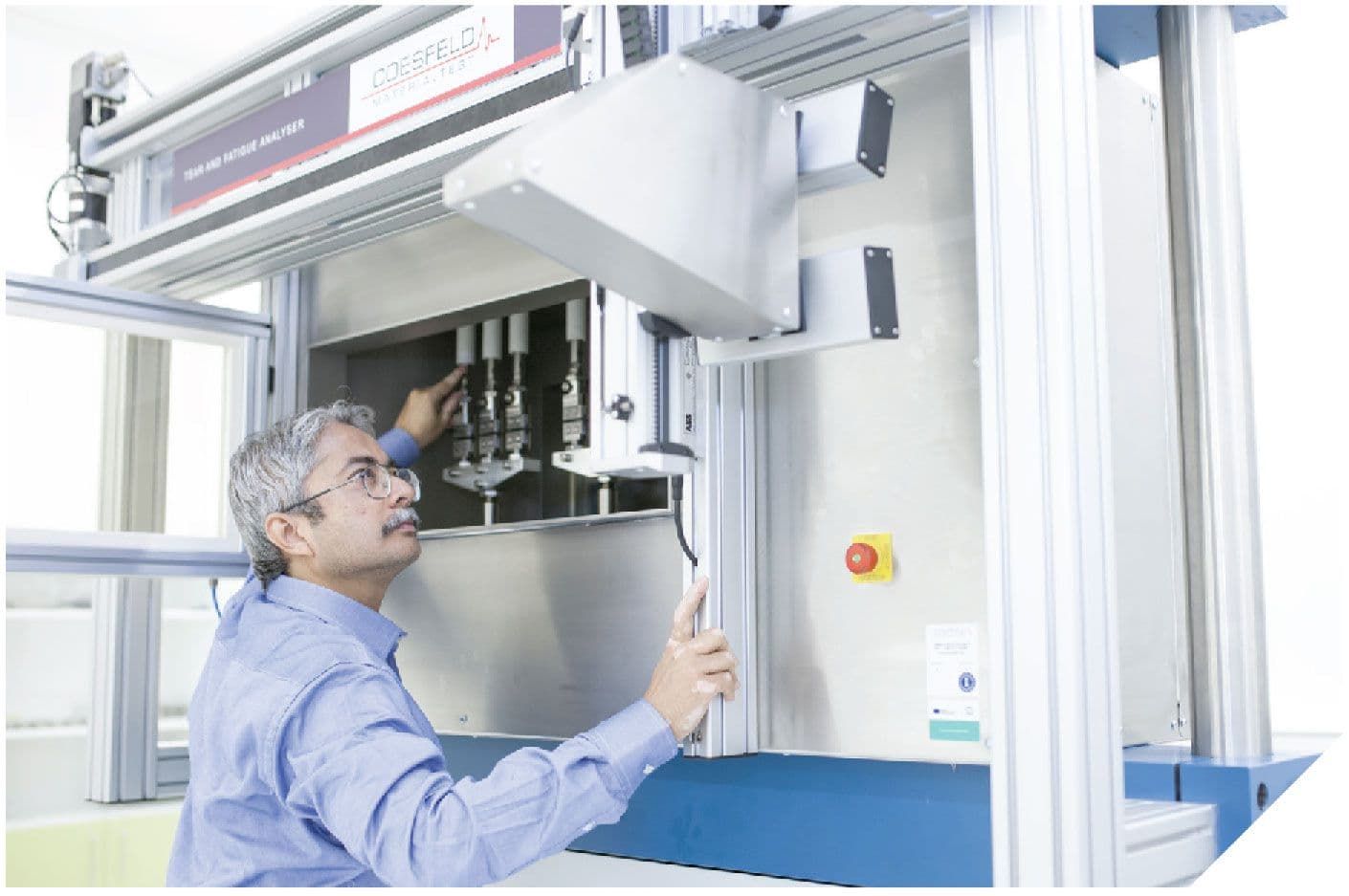Rubber Technologies
Development of research direction
RP/CPS/2024-28/006 - Competent development of the Rubber Technology research direction at the Centre of Polymer Systems in the area of the impact of tire abrasion particle emissions on the environment, 2024-2028
Principal Researcher: Ing. Martin Stěnička, Ph.D.
The aim of the project is to expand the professional competence of the research direction Rubber Technology (GT) at the Centre of Polymer Systems (CPS) in the area of the influence of tire abrasion particle emissions on the environment so that CPS and this research direction gain an international reputation as an excellent research workplace that possesses interdisciplinary competence in understanding materials engineering combined with environmental protection.
Implemented projects
GA26-233495S - Fundamentals of Electrically Activated Self-Healing Processes of Rubbers Filled with Hybrid Conductive-Nonconductive Fillers, 2026-2028
CZ.01.01.01/01/22_002/0000682 Development of a new ecological anti-noise barriers - 2024 - 2026
Completed projects
TH80020008 Modelling Wear of Intrinsically Self-Healing Elastomers for Reduced Particle Emission and Improved Lifetime Performance in Future e-Mobility Concepts
8E15B007 - project of cooperation between the Czech Republic and Bavaria entitled “Experimental investigation on rubbers´ mechanical behaviour under fatigue loading conditions including chemothermomechanical aging”, 2016 – 2017 (partner – Universität der Bundeswehr, München, Germany).
Research outcomes
Novel perspectives on self-monitoring internal rubber failure using piezoresistivity

Wearable and stretchable SEBS/CB polymer conductive strand as a piezoresistive strain sensor

Parametrical function describing influences of the redistribution of incorporated oil for rupture process reconstruction in rubber

Evaluation of selected properties and surface quality of cured pre-impregnated carbon-fiber fabrics after exposure to sulphuric acid

The effect of apparent cross-link density on cut and chip wear in natural rubber

Degradation of tires during intended usage

Experimental and numerical description of the heat build-up in rubber under cyclic loading

Tuning the curing efficiency of conventional accelerated sulfur system for tailoring the properties of natural rubber/bromobutyl rubber blends

Study of factors influencing vibro-isolating properties of materials for passive elastic bearing of machines

Study of the mechanical, sound absorption and thermal properties of cellular rubber composites filled with a silica nanofiller

Identifying the co-curing effect of an accelerated-sulfur/bismaleimide combination on natural rubber/halogenated rubber blends using a rubber process analyzer

Finite element modeling and critical plane analysis of a cut-and-chip experiment for rubber
Contacts
Head of the group: doc. Dr. Ing. Radek Stoček
Scientific team
Ph.D. students
-
doc. Dr. Ing. Radek Stoček
-
+420 57 603 4920
-
A420
-
This email address is being protected from spambots. You need JavaScript enabled to view it. -
research
- Sanjoy Datta, Ph.D.
-
+420 57 603 1724
-
A211
-
This email address is being protected from spambots. You need JavaScript enabled to view it. -
research
- Evghenii Harea, Ph.D.
-
+420 57 603 1747
-
A325
-
This email address is being protected from spambots. You need JavaScript enabled to view it. -
research
- Ing. Ondřej Kratina, Ph.D.
-
+420 57 603 1723
-
A210
-
This email address is being protected from spambots. You need JavaScript enabled to view it. -
research
- Ing. Marek Pöschl, Ph.D.
-
+420 57 603 1737
-
A228
-
This email address is being protected from spambots. You need JavaScript enabled to view it.
-
Ing. David Rebenda, Ph.D.
-
+420 57 603 1747
-
A325
-
This email address is being protected from spambots. You need JavaScript enabled to view it.
- Ing. Martin Stěnička, Ph.D.
-
+420 57 603 1726
-
+420 734 787 743
-
A213
-
This email address is being protected from spambots. You need JavaScript enabled to view it. -
research
-
Ing. Petr Zádrapa, Ph.D.
-
+420 57 603 1747
-
A325
-
This email address is being protected from spambots. You need JavaScript enabled to view it. -
research
-
Ing. Ondřej Peter
-
+420 57 603 1737
-
A228
-
This email address is being protected from spambots. You need JavaScript enabled to view it.
- Ing. Nikolas Ryzí
-
+420 57 603 1737
-
A228
-
This email address is being protected from spambots. You need JavaScript enabled to view it.


